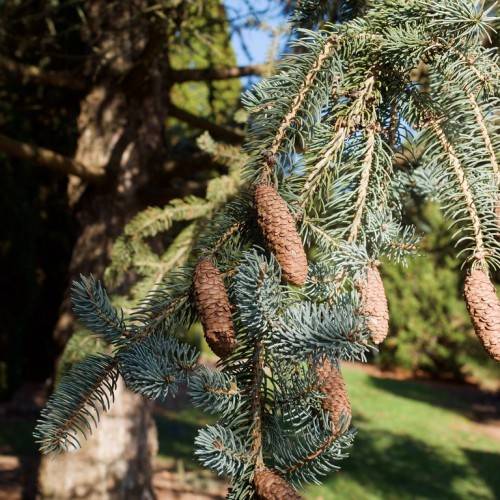
Meyer's spruce (seedling)
Picea meyeri
Cycle:
Perennial
Watering:
Frequent
Hardiness Zone:
6
Flowers:
Flowers In Spring
Sun:
Filtered shade, Full sun, Part sun/part shade
Soil:
Acidic, Bog, Humus rich
Fruits:
Fruits In Summer Ready In Fall
Leaf:
Yes
Growth Rate:
High
Maintenance:
Low
Drought Tolerant:
Yes
Salt Tolerant:
Yes
Invasive:
Yes
Care Level:
Medium
watering
Pacific ninebark should be watered about once or twice a week, depending on the soil and climate conditions. During the hot summer months, it may need more frequent watering in order to prevent wilting and keep the foliage looking lush and healthy. The soil should be kept moist, but not overly wet, so check it regularly with your finger to make sure the top few inches of soil is damp but not saturated. When you do water, be sure to give it evenly and thoroughly, allowing for the water to penetrate the root area. As a general rule, Pacific ninebark should be watered deeply 2-4 times each month during the growing season. When temperatures are cooler and the plant is dormant, you can reduce watering to 1-2 times a month.
sunlight
Pacific ninebark (Physocarpus capitatus) prefers full sunlight in order to grow and thrive and should receive about 6-8 hours of sun each day. It can tolerate some shade, particularly in warmer climates, but will produce fewer flowers and fruit when grown in partial shade. For optimal health and growth, the plant should be located in an area that receives direct sunlight for at least half the day.
pruning
Pacific Ninebark (Physocarpus capitatus) should be pruned twice each year, once in the late winter and then again in early summer. Pruning in late winter should focus on removing dead or damaged branches and thinning out the interior of the shrub to promote air circulation and to improve the overall shape of the plant. In early summer, prune new shoots that have grown to reduce the overall size of the shrub as needed. It is important to not prune too severely as this could cause the plant to become open and undesirable. When pruning Pacific Ninebark, it is important to use sharp pruning shears to ensure that the cuts are clean and make sure to take off no more than 1-third of the growth each time.
